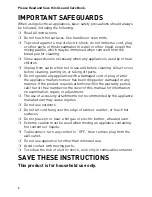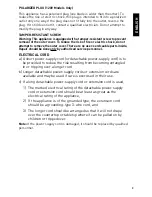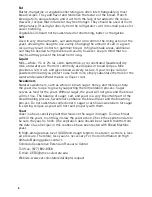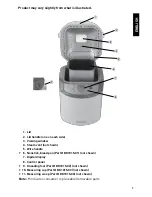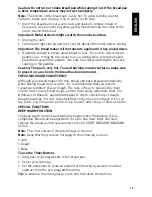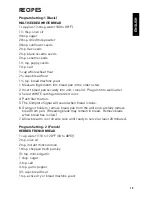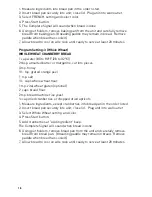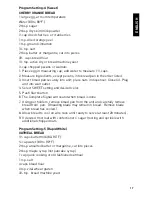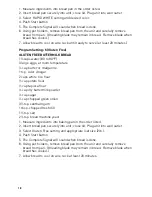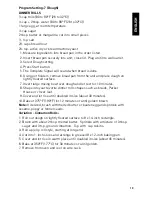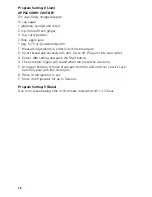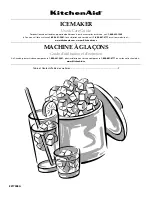
5
ENGLISH
5. When recipes call for a “lightly floured surface,” use about 1 tablespoon
flour on the surface. You may want to lightly flour your hands or rolling pin
for easy dough manipulation.
6. Recipes referring to a “greased/oiled” bowl call for about 1 tablespoon oil
or soft vegetable shortening spread on the bottom and sides of the bowl.
You may prefer to use a nonstick vegetable spray to “grease” the bowl to
cut down on added fats and calories. Place the ball of dough into the bowl
and turn it over so that the dough is lightly greased on all sides.
7. When you let dough “rest”, form the dough into a ball and place it on a
clean dry surface. Invert a large clean bowl over the dough and let it stand
as directed in your recipe. When you let dough “rise” according to recipe
directions, place it in a warm, draft-free area. For best results, cover the
bowl with a clean, dry towel. To produce a tender product, make sure the
dough rises until double in size.
8. dough may be wrapped in plastic wrap and stored in a freezer for later
use. Bring the dough to room temperature before using.
9. Important to note that “RAPId BAKe” will make a denser loaf of bread
BREAD AND DOUGH INGREDIENTS:
Some ingredients differ between Canada and the United States. Cheese,
confectioner’s (icing) sugar and cornmeal are just a few ingredients that vary
between the two countries. The major difference is in flour.
Eggs
eggs add richness and velvety texture to bread dough. When bread calls for
eggs (s),large egg(s) at room temperature should be used.
Flours
Canadian flours are milled from harder wheats so breads can be successfully
made from national brands of both All-Purpose Flour and Bread Flour. U.S.
“All-Purpose Flour” will produce poor results and should not be used with this
unit. In the U.S., it is important to use “Bread Flour” for even-textured loaves.
Bread flour is processed from hard wheat and is high in the protein
substance called gluten. When mixed and kneaded, the gluten stretches
and incorporates air bubbles to produce a light, fine-textured loaf. The
stretchy resilience of gluten makes this kind of flour most tolerant to high
temperatures, altitude, or high humidity.
Canadian “All-Purpose Flour” is easy to find and has been extensively tested
with the recipes included in this book with good results. Canadian Bread Flour
may also be used with good results.
Whole wheat and multi-grain flours contain the bran and germ of the grain.
Although higher in fiber, these flours are lower in gluten than bread flour. Rye
flour does not contain any gluten and therefore, must be used in combination
with other flours. Whole wheat, multi-grain and rye flour typically produce
shorter, denser loaves. Whole wheat flours vary greatly between the United
States and Canada and from one brand to another. The recipes have been
developed and tested using nationally available brands of flour.


